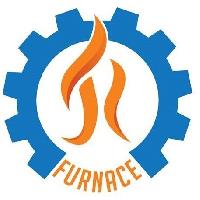High Temperature Furnace: Precision Heating Solutions for Extreme Industrial Demands

Posted by jrfurnace
from the Business category at
21 Jun 2025 06:24:26 am.
What Is a High Temperature Furnace?
A high temperature furnace is an industrial heating system engineered to reach and maintain very high temperatures, typically in the range of 1300°C to 1800°C, and sometimes even higher. Unlike standard furnaces used for annealing or tempering, high temperature furnaces are built for intense processes such as sintering, calcination, ceramic firing, melting, and heat treatment of exotic metals and advanced materials.
These furnaces use specially designed heating elements, refractory materials, and insulation that can perform reliably under extreme thermal conditions for prolonged periods.
Applications of High Temperature Furnaces
High temperature furnaces are used across diverse industries where conventional furnaces fall short. Common applications include:
Sintering of ceramics and powders – Used in industries like electronics, automotive, and biomedical.
Heat treatment of tool steels and superalloys – Required in aerospace, automotive, and industrial machinery.
Material testing and research – For developing new materials or studying phase transitions.
Refractory and glass production – Melting and reshaping glass or forming fire-resistant materials.
Vacuum brazing and diffusion bonding – Where precise temperature control is critical for joint quality.
Calcination and thermal decomposition – For minerals and chemicals.
Types of High Temperature Furnaces
Depending on the end-use, high temperature furnaces come in different designs:
1. Box-Type Furnace
Features a front-loading chamber ideal for batch operations in research or small-scale production.
2. Tube Furnace
Used in labs and R&D centers for treating small specimens or conducting chemical reactions in controlled atmospheres.
3. Muffle Furnace
Designed with a separate heating zone that isolates the sample from combustion gases. Common in analytical labs.
4. Vacuum Furnace
Allows heat treatment in a vacuum or inert atmosphere to prevent oxidation and contamination—widely used in aerospace and electronics.
5. Chamber Furnace with Controlled Atmosphere
Used for sintering and metal treatment in hydrogen, nitrogen, argon, or custom gas mixtures.
Key Features of High Temperature Furnaces
✅ Temperature Range: Can reach up to 1800°C or more
✅ Heating Elements: Made from molybdenum disilicide (MoSi₂), silicon carbide (SiC), tungsten, or graphite
✅ Control Systems: Equipped with PID, PLC, or SCADA-based systems for accurate cycle control
✅ High-Performance Insulation: Advanced ceramic fiber or alumina lining to minimize heat loss
✅ Atmosphere Control (Optional): Inert or vacuum chambers for oxidation-free heating
✅ Safety Features: Thermal overload protection, door interlocks, and automatic cooling systems
✅ Construction: Robust stainless steel or refractory body with corrosion and heat-resistant properties
Advantages of High Temperature Furnaces
Precise Temperature Control: Essential for materials with narrow thermal processing windows.
Extreme Heat Capability: Enables the treatment of high-melting-point materials like titanium, tungsten, or ceramics.
Reduced Contamination: Optional vacuum and inert environments ensure cleaner processes.
High Repeatability: Uniform heating and digital control systems ensure consistent results.
Energy Efficient: Advanced insulation and programmable cycles reduce energy waste.
Versatile Use Cases: From R&D labs to industrial-scale heat treatment lines.
Maintenance and Safety Considerations
High temperature furnaces require proper maintenance due to the extreme conditions under which they operate:
Regular inspection of heating elements and insulation
Calibration of temperature sensors and thermocouples
Cleaning air filters and venting systems (if gas-operated)
Checking for vacuum integrity in sealed models
Monitoring safety interlocks and door mechanisms
These steps ensure longer furnace life, optimal safety, and consistent heating performance.
Conclusion
A high temperature furnace is not just a heat source—it is a precision tool enabling advancements in science, engineering, and manufacturing. From shaping advanced ceramics to hardening aerospace alloys, this furnace type is indispensable for industries that push the boundaries of heat and material performance.
Investing in the right high temperature furnace means unlocking a new level of quality, consistency, and innovation in your thermal processes. Whether you’re conducting advanced research or running a production line, these furnaces offer unmatched reliability and efficiency in extreme conditions.
0 Comments



